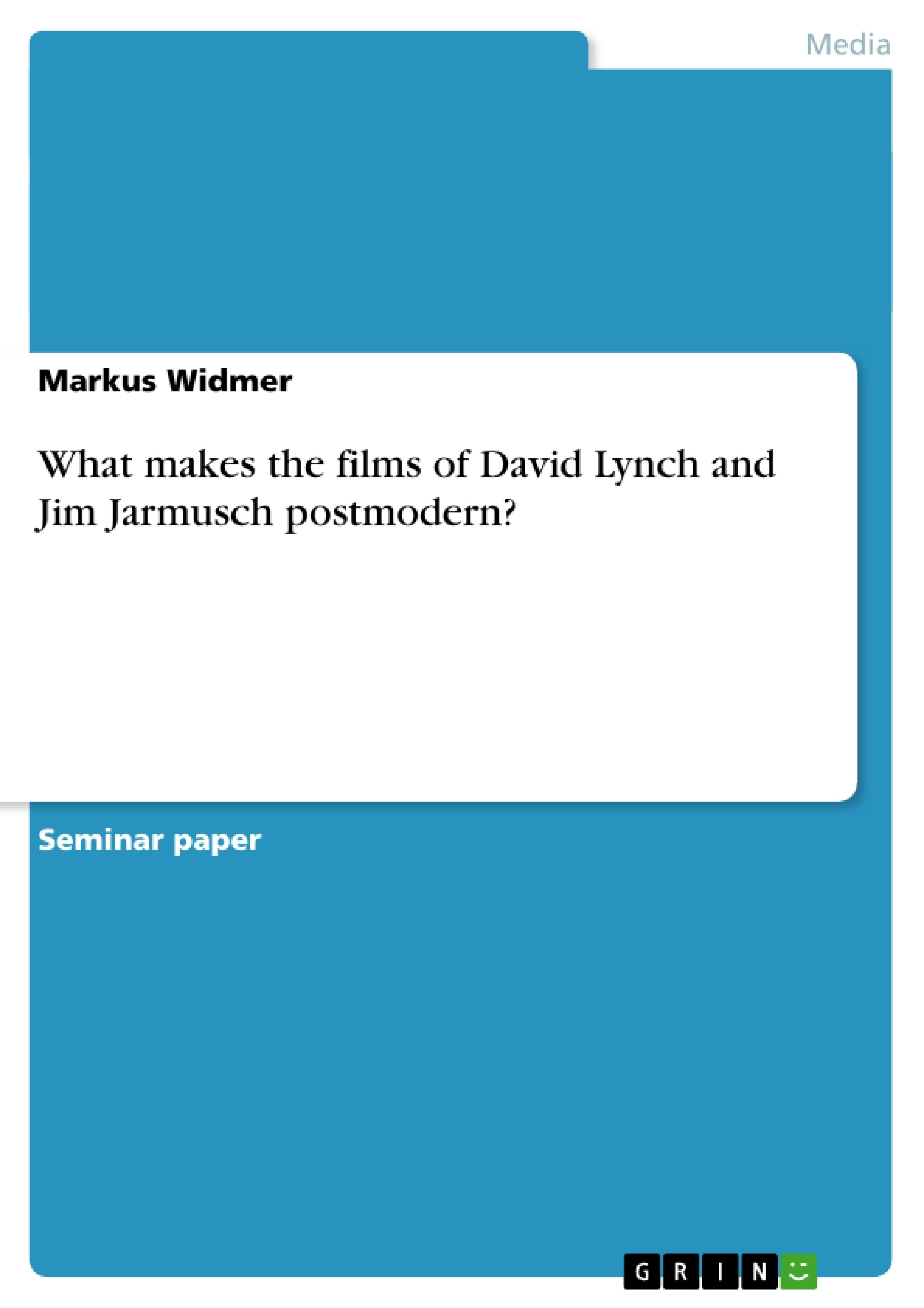The term ‘postmodern’ has been used in different areas of study to describe similar phenomena. However, one must differentiate between postmodernism as a historical period, a cultural theory and an aesthetic category. The latter two uses will be the most important ones for my essay. It is essential for my discussion to include theories on postmodern culture, because the relationship between the real and its representation, and the zeitgeist as presented in film, is of vital importance for postmodern film. I will not define the term postmodernism here, on the one hand because the brevity of this essay does not allow my entering this ongoing debate, and, on the other hand, because the term itself escapes any fixed definition - it is rather a set of different tendencies.
The terms ‘postmodernism’ or ‘the postmodern’ are less precise categories than different versions of an all-embracing gesture which sums up a spirit of the times, an atmosphere.1
However, to be able to discuss whether or not Jim Jarmusch’s and David Lynch’s films are postmodern, I must first find a definition for ‘postmodern film’. One would expect a postmodern film to tackle the postmodern condition, life in postmodernity, as its subject matter. Since the differences in class, gender and ethnicity are central to the discussion of postmodernism,2 one can assume that these categories are equally important for the plot of a postmodern film. However, Down and Out in Beverly Hills is a film about life in the postmodern city and deals with questions of class and gender, but it is conventional in its style and structure, and obviously far from being a postmodern film. Thus not only the subject matter, but also the audiovisual style and narrative structure of a film should display postmodern characteristics.
Inhaltsverzeichnis (Table of Contents)
- Introduction
- Jim Jarmusch
- David Lynch
- Conclusion
Zielsetzung und Themenschwerpunkte (Objectives and Key Themes)
This essay aims to explore the postmodern characteristics of the films of Jim Jarmusch and David Lynch. It will examine how their films reflect the postmodern condition, particularly in their narrative structures, visual styles, and thematic explorations.
- Postmodernism as a cultural theory and aesthetic category
- The relationship between reality and its representation in film
- The critique of master-narratives and the fragmentation of narrative structure
- Cultural identity, alienation, and displacement in postmodern society
- The use of pastiche and eclecticism in postmodern film
Zusammenfassung der Kapitel (Chapter Summaries)
- Introduction: This chapter introduces the concept of postmodernism and its different uses in various fields of study. It emphasizes the importance of understanding postmodern culture and the relationship between reality and its representation in film for analyzing postmodern cinema.
- Jim Jarmusch: This chapter examines the postmodern characteristics of Jim Jarmusch's films, focusing on their fragmented narrative structures and visual styles. It highlights the use of long takes, anti-hierarchical tendencies, and the juxtaposition of parallel stories in his work.
Schlüsselwörter (Keywords)
This essay focuses on the key concepts of postmodernism, film, narrative structure, visual style, cultural identity, alienation, displacement, pastiche, and eclecticism. It explores these concepts through the lens of Jim Jarmusch and David Lynch's filmmaking, highlighting their contributions to postmodern cinema.
- Arbeit zitieren
- Mag. Markus Widmer (Autor:in), 1998, What makes the films of David Lynch and Jim Jarmusch postmodern?, München, GRIN Verlag, https://www.grin.com/document/14783



